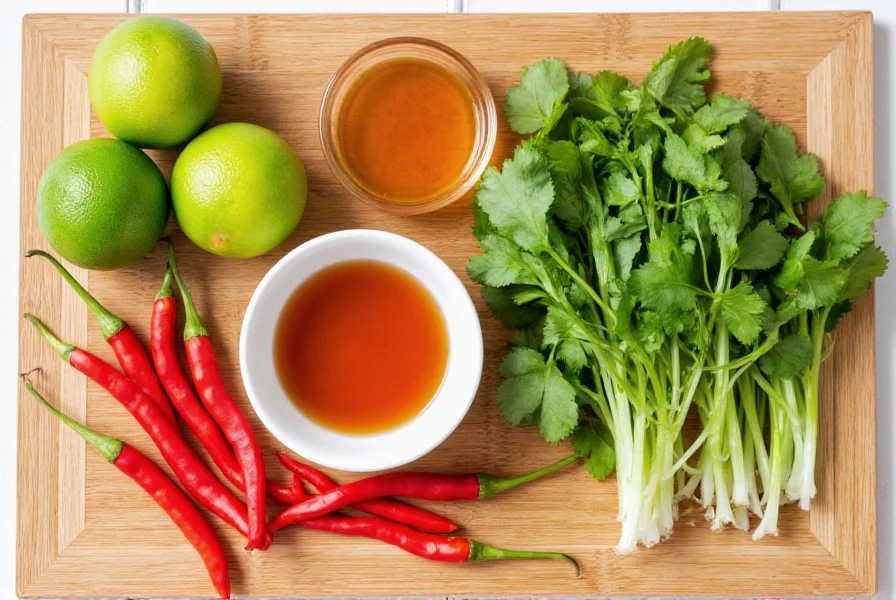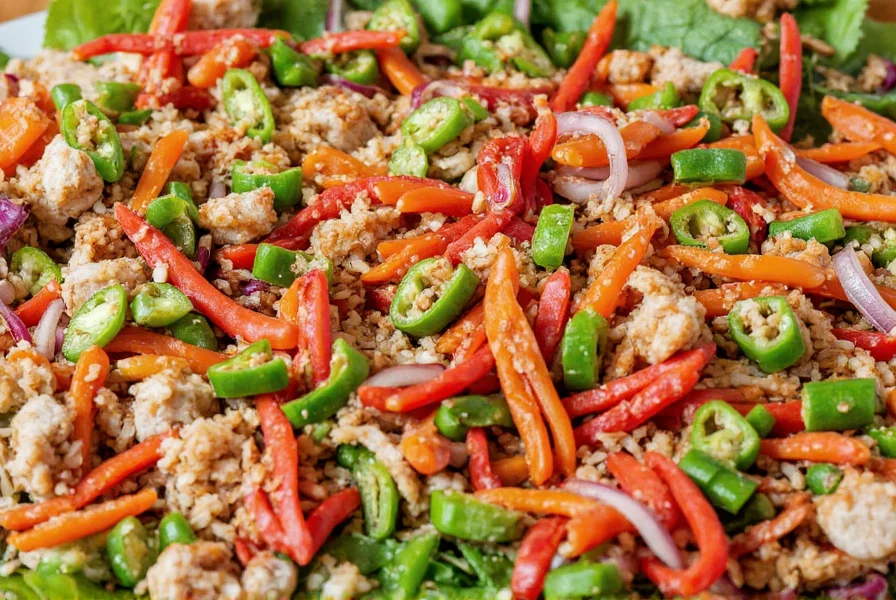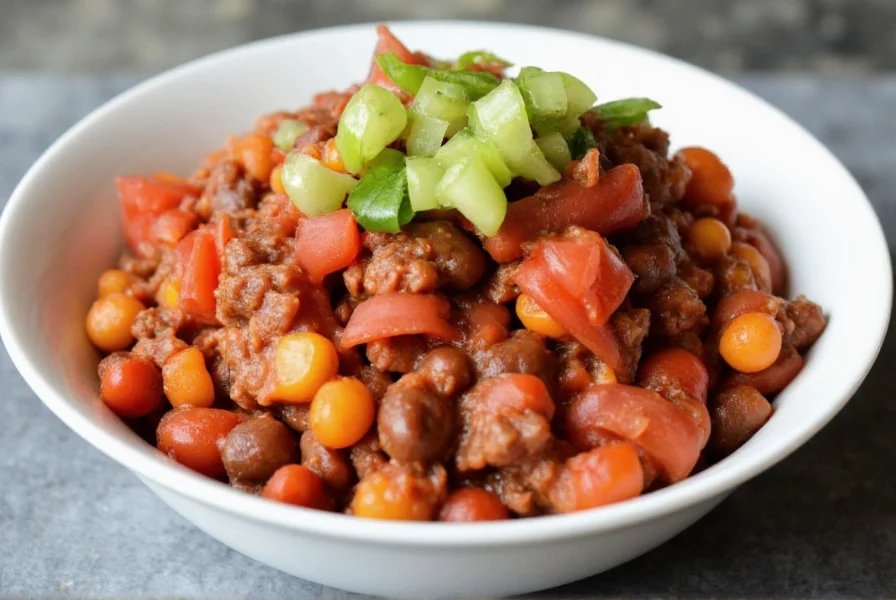Chili salad represents one of Southeast Asia's most celebrated culinary creations, offering a perfect balance of fresh ingredients and complex flavors. This versatile dish has evolved across regional boundaries while maintaining its essential character—crisp vegetables bathed in a dressing that delivers an exhilarating kick without overwhelming the palate.
The Essential Components of Authentic Chili Salad
Creating an exceptional chili salad requires understanding its fundamental elements. The dish's magic lies in the careful selection and preparation of ingredients that work in harmony. Unlike Western salads that often rely on creamy dressings, chili salad showcases the Southeast Asian culinary philosophy where each component maintains its distinct identity while contributing to the overall experience.

Core Ingredients and Their Roles
The foundation of any memorable chili salad rests on four critical components that create its signature flavor profile:
| Ingredient Category | Key Examples | Flavor Contribution |
|---|---|---|
| Chilies | Bird's eye, serrano, jalapeño | Spicy heat foundation |
| Acid Components | Lime juice, tamarind | Bright, tangy counterbalance |
| Salt Elements | Fish sauce, soy sauce | Depth and umami enhancement |
| Sweeteners | Palm sugar, brown sugar | Heat modulation and balance |
Traditional Preparation Techniques
Mastery of chili salad preparation involves more than simply combining ingredients—it requires understanding the proper sequence and technique. Professional chefs emphasize the "bloom" method for the dressing, where chilies are briefly pounded with salt before adding liquids to maximize flavor extraction. The vegetables should be cut uniformly for consistent texture, and the dressing should be tossed through ingredients rather than poured over them to ensure even coating.
For optimal results when making homemade chili salad, prepare the dressing first and let it sit for 10-15 minutes to allow flavors to meld. Add delicate herbs like mint and cilantro at the very end to preserve their bright flavor and vibrant color. The salad should rest for no more than 20 minutes before serving to maintain the perfect crisp-tender texture that defines authentic chili salad.
Regional Variations Across Southeast Asia
While the basic concept remains consistent, chili salad transforms dramatically across different culinary traditions:
- Thai Yum Som Tum: Features shredded green papaya, tomatoes, and peanuts with a more pronounced lime-forward dressing
- Vietnamese Goi Du Du: Incorporates shredded green mango with a slightly sweeter profile and often includes toasted sesame seeds
- Laotian Tam Mak Hoong: Uses fermented fish sauce and incorporates more bitter greens like dandelion
- Malaysian Kerabu: Often includes shredded chicken or shrimp with a coconut milk-infused dressing

Step-by-Step Recipe for Classic Thai Chili Salad
Creating an authentic Thai chili salad requires attention to detail but remains accessible for home cooks. This recipe serves two as a main course or four as a side dish.
Ingredients
- 2 cups shredded green papaya or jicama (about 300g)
- 1 medium carrot, julienned
- 1 small tomato, quartered
- 2-3 bird's eye chilies, to taste
- 2 cloves garlic
- 1 tablespoon palm sugar
- 3 tablespoons fresh lime juice
- 2 tablespoons fish sauce
- 1/4 cup cherry tomatoes, halved
- 2 tablespoons roasted peanuts, crushed
- Fresh mint and cilantro leaves for garnish
Preparation Method
- Prepare all vegetables by washing and cutting to uniform sizes
- In a mortar, gently pound chilies and garlic with a pinch of salt until fragrant
- Add palm sugar and continue pounding until dissolved
- Stir in lime juice and fish sauce, mixing thoroughly
- In a large bowl, combine shredded vegetables and herbs
- Pour dressing over vegetables and toss gently but thoroughly
- Add tomatoes and peanuts, tossing once more
- Let rest for 15 minutes before serving to allow flavors to meld
Serving Suggestions and Pairings
Chili salad shines as both a standalone dish and a complementary element in larger meals. For traditional Thai dining, serve alongside grilled meats like chicken satay or pork neck. The salad's bright acidity cuts through rich flavors, making it an ideal accompaniment to fried foods or heavy curries. When serving chili salad as part of a multi-dish meal, present it in small portions to maintain its role as a palate cleanser rather than the main focus.
For Western adaptations, chili salad works beautifully as a topping for grilled fish or as a filling for rice paper rolls. The dressing components can also be modified to create a dipping sauce for spring rolls or dumplings. When pairing with beverages, consider crisp white wines like Riesling or light beers that won't compete with the salad's complex flavors.
Storage Guidelines and Shelf Life
Chili salad is best enjoyed fresh, but proper storage extends its quality. Keep undressed components separate until ready to serve. The dressing can be stored in an airtight container in the refrigerator for up to five days. When storing the complete salad, use a glass container with minimal air space and consume within 24 hours for optimal texture. Note that the vegetables will continue to absorb the dressing, becoming progressively softer over time.
Common Preparation Mistakes to Avoid
Even experienced cooks can stumble when preparing chili salad. The most frequent error involves improper dressing balance—either overwhelming the dish with heat or creating a one-dimensional flavor profile. Remember that authentic chili salad should feature all four taste elements: spicy, sour, salty, and sweet. Another common mistake is over-dressing the salad, which causes vegetables to become soggy. Start with half the dressing, toss thoroughly, then add more as needed.
Many home cooks also underestimate the importance of ingredient temperature. For the most refreshing experience, chill all vegetables before preparation and serve immediately. The contrast between cool vegetables and vibrant dressing creates the signature sensory experience that defines exceptional chili salad.
Nutritional Benefits of Chili Salad
Beyond its delightful flavor, chili salad offers impressive nutritional advantages. The base of fresh vegetables provides essential vitamins and fiber, while the dressing components deliver additional health benefits. Chilies contain capsaicin, which may boost metabolism and reduce inflammation. Lime juice contributes vitamin C and aids digestion, while fish sauce provides amino acids and trace minerals. When prepared with minimal added sugar, chili salad remains low in calories while delivering maximum flavor satisfaction.
Perfecting Your Chili Salad Technique
Mastering chili salad requires practice and attention to detail. Start by focusing on the dressing balance—taste as you go and adjust incrementally. Consider keeping a small notebook to record your adjustments for future reference. The ideal dressing should make your lips tingle slightly without causing discomfort, with the sour and sweet elements providing relief from the heat.
As you gain confidence, experiment with seasonal ingredients and personal preferences. Some chefs add toasted coconut for texture, while others incorporate edible flowers for visual appeal. The beauty of chili salad lies in its adaptability—while respecting traditional foundations, there's room for creative expression that honors both the dish's heritage and your personal taste.
What's the difference between Thai and Vietnamese chili salad?
Thai chili salad (Yum Som Tum) typically features shredded green papaya with a more pronounced lime-forward dressing, while Vietnamese Goi Du Du uses shredded green mango with a slightly sweeter profile and often includes toasted sesame seeds. Thai versions tend to be spicier with more garlic, while Vietnamese variations emphasize fish sauce and incorporate more fresh herbs like mint and perilla.
Can I make chili salad without fish sauce for vegetarian options?
Yes, you can create an excellent vegetarian chili salad by substituting fish sauce with a combination of soy sauce and mushroom seasoning. For authentic flavor, use 2 tablespoons soy sauce plus 1 teaspoon mushroom powder or dried shiitake mushroom tea. Some chefs also add a pinch of seaweed flakes to replicate the umami depth that fish sauce provides in traditional recipes.
How can I reduce the spiciness of chili salad without compromising flavor?
To reduce spiciness while maintaining authentic flavor, remove chili seeds and membranes before preparation, as these contain most of the capsaicin. Increase the palm sugar slightly and add more lime juice to balance the heat. You can also incorporate cooling elements like cucumber slices or avocado chunks. Remember that the salad's spiciness will mellow slightly as it rests, so wait 15 minutes before final heat assessment.
What vegetables work best as substitutes in chili salad?
When green papaya isn't available, jicama makes an excellent substitute with similar crisp texture. Other suitable alternatives include shredded cabbage, daikon radish, or even apple for sweetness. For protein additions, consider grilled shrimp, shredded chicken, or tofu. The key is maintaining contrasting textures—combine crunchy elements with softer components for the most satisfying mouthfeel.
How long should chili salad sit before serving for best flavor?
Chili salad should rest for 15-20 minutes after dressing to allow flavors to meld properly, but no longer than 30 minutes to maintain optimal texture. This resting period enables the vegetables to absorb the dressing's complex flavors while retaining their essential crunch. For the most authentic experience, serve at cool room temperature rather than chilled, as extreme cold dulls the nuanced flavor profile.











 浙公网安备
33010002000092号
浙公网安备
33010002000092号 浙B2-20120091-4
浙B2-20120091-4